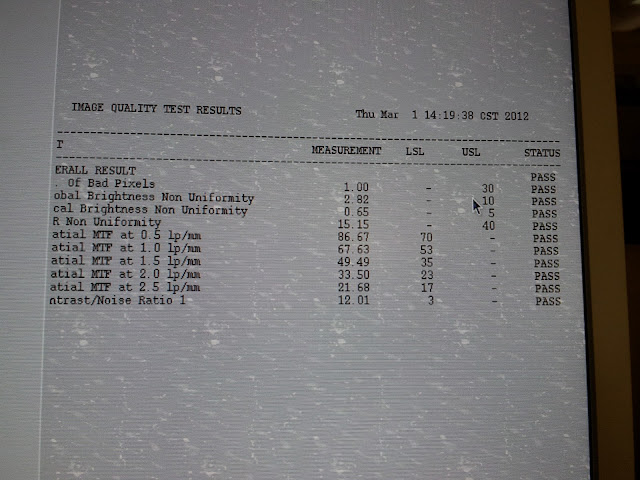Although
pixels look small, they make big impacts when it comes to diagnostic imaging. A
pixel’s duty is to receive the beam electrons and then later transfer the data
and form an image or a radiograph. If
there are a lot of non-functioning pixels in a detector, it would greatly decrease
the quality of the image. Each pixel contains a unique data that other
pixels cannot be replaced and that is why pixel’s condition is so important. It is important to check every 3 to 6 months
to see if all the pixels are still functioning normally. Otherwise, dead pixels
would show up as artifacts or white dots and other technologists might think it
is an actual artifact and might lead to an unnecessary repeat.
Since pixels play such a big role, I think it is important
to maintain it quality. A Quality
Assurance Procedures, or formerly known as QAP is the only way to test if there
are any dead pixels in a detector. As mentioned above, too many dead pixels
will decrease the quality of the image because the dead pixels will appear
white and shown as artifacts. Having
such artifacts will affect the result of diagnosis because the artifacts might
be on the exact same spot of pathology. Each manufacturer has a different acceptance
range of bad pixels. According to GE, the manufacturer of our machine, the pass
or fail depends on the number of dead pixels. Here is our test result.
As seen above, there was only one dead pixel and we passed
the image quality test. We should keep track of each month’s QAP to see if
there are any more dead pixels, because eventually, the dead pixels would
accumulate and fail the quality assurance test.
If we do not perform any QAP, the dead pixels will gives us troubles
during our labs because of the numbers of the dead pixels. This is another
reason why quality control should be carried, so that the equipments are kept
at high quality and utilize itself.

No comments:
Post a Comment